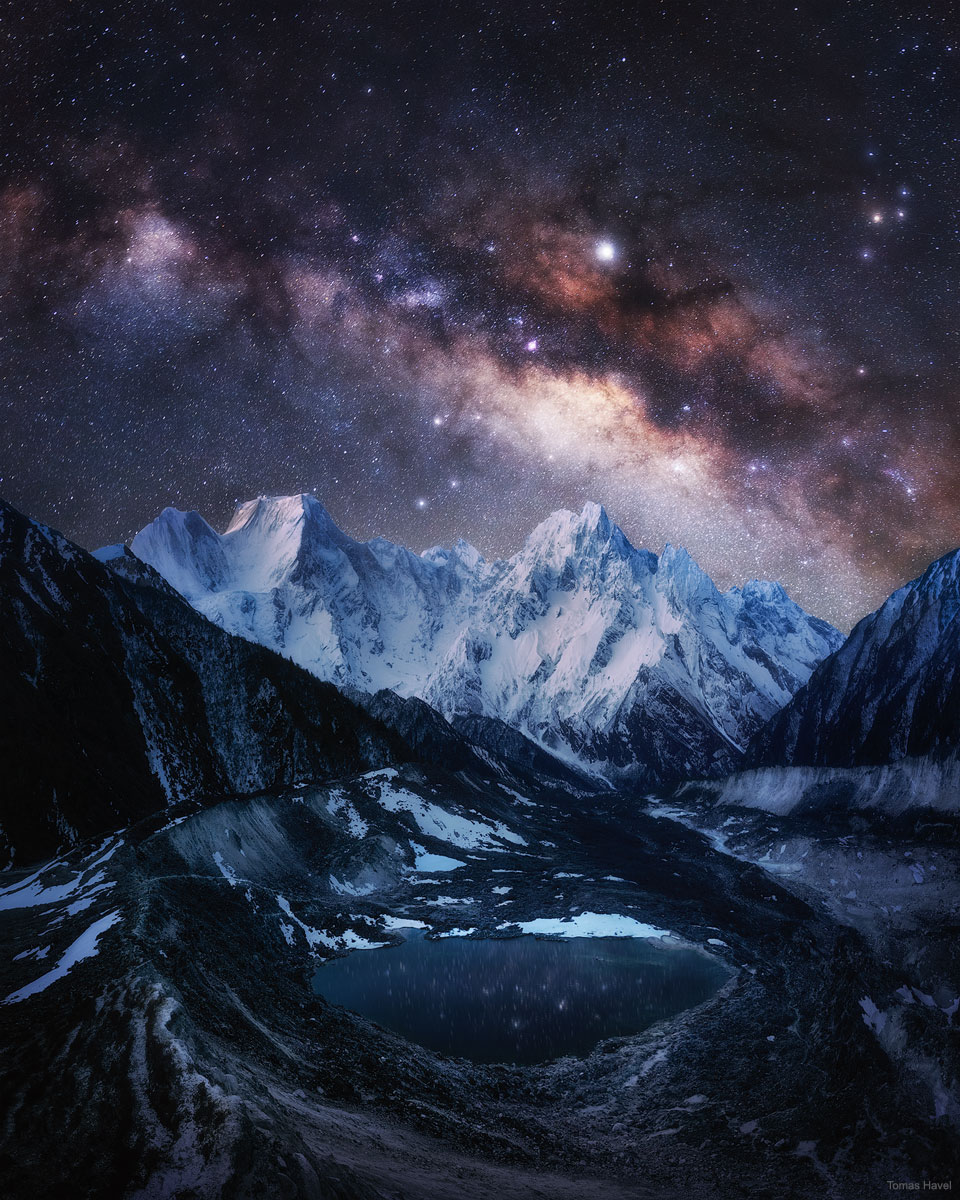2020 May 26
The Milky Way over Snow-Capped Himalayas
Image Credit & Copyright: Tomas Havel
Explanation: What’s higher than the Himalayas? Although the Himalayan Mountains are the tallest on planet Earth, they don’t measure up to the Milky Way. Visible above the snow-capped mountains in the featured image is the arcing central band of our home galaxy. The bright spot just above the central plane is the planet Jupiter, while the brightest orange spot on the upper right is the star Antares. The astrophotographer braved below-zero temperatures at nearly 4,000-meters altitude to take the photographs that compose this image. The featured picture is a composite of eight exposures taken with same camera and from the same location over three hours, just after sunset, in 2019 April, from near Bimtang Lake in Nepal. Over much of planet Earth, the planets Mercury (faint) and Venus (bright) will be visible this week after sunset.
Experts Debate: How will humanity first discover extraterrestrial life?
Tomorrow’s picture: Earth from Saturn
喜马拉雅雪峰上空的银河
影像提供与版权: Tomas Havel
说明: 有什么比喜马拉雅山高呢?虽然喜马拉雅山是地球最高耸的山脉,但它其实和银河根本没得比。在这幅主题影像里,悬在这些雪峰上空的,是我们银河系的拱形中央盘面,中央盘面上方的亮斑是木星,右上角最明亮的橙红亮斑则是心宿二。。拍摄这幅主题影像的天文摄影者,是在2019年4月冒着零下的气温,于将近4,000公尺高的尼泊尔.滨塘湖附近的山区,在日落后不久的3小时期间,使用同一部相机在相同地地点,拍下了组成这幅影像的8张照片。在这星期,地球大部分的地区在日落后,可见到昏暗的水星和明亮的金星。
专家辩论: 人类将如何首先发现外星生命?
明日的图片: Earth from Saturn







